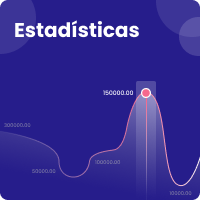Sistema de visión por computadora para la identificación de palma amazónica y el estado de madurez de sus frutos mediante navegación aérea no tripulada UAV
DOI:
https://doi.org/10.26507/paper.2270Palabras clave:
Palma amazónica, Aprendizaje profundo, Aprendizaje automático, Drones para agricultura, Estado de madurez, Fruto amazónicoResumen
Se presenta un enfoque de trabajo de investigación haciendo uso de herramientas de visión por computadora y aeronaves no tripuladas UAV para la identificación de palma amazónica (Asai, Seje y Moriche) y el estado de madurez de sus frutos, mediante correlaciones entre el estado de la planta a nivel dosel basados en las radiaciones fotosintéticas y el estado de madurez del fruto.
Descargas
Citas
Cárdenas López, D., & Arias G., J. C. (2007). Manual de identificación, selección y evaluación de oferta de productos forestales no maderables. https://sinchi.org.co/manual-de-identificacion-seleccion-y-evaluacion-de-oferta-de-productos-forestales-no-maderables
Casapia, X. T., Falen, L., Bartholomeus, H., Cárdenas, R., Flores, G., Herold, M., Coronado, E. N. H., & Baker, T. R. (2019). remote sensing Identifying and Quantifying the Abundance of Economically Important Palms in Tropical Moist Forest Using UAV Imagery. https://doi.org/10.3390/rs12010009
Coelho Eugenio, F., Badin, T. L., Fernandes, P., Mallmann, C. L., Schons, C., Schuh, M. S., Soares Pereira, R., Fantinel, R. A., & Pereira da Silva, S. D. (2021). Remotely Piloted Aircraft Systems (RPAS) and machine learning: A review in the context of forest science. In International Journal of Remote Sensing (Vol. 42, Issue 21, pp. 8207–8235). Taylor and Francis Ltd. https://doi.org/10.1080/01431161.2021.1975845
Elarab, M., Ticlavilca, A. M., Torres-Rua, A. F., Maslova, I., & McKee, M. (2015). Estimating chlorophyll with thermal and broadband multispectral high resolution imagery from an unmanned aerial system using relevance vector machines for precision agriculture. International Journal of Applied Earth Observation and Geoinformation, 43, 32–42. https://doi.org/10.1016/J.JAG.2015.03.017
Flórez, J., Ortega, J., Betancourt, A., García, A., Bedoya, M., & Botero, J. S. (2020). A review of algorithms, methods, and techniques for detecting UAVs and UAS using audio, radiofrequency, and video applications. TecnoLógicas, 23(48), 269–285. https://doi.org/10.22430/22565337.1408
Fromm, M., Schubert, M., Castilla, G., Linke, J., & McDermid, G. (2019). Automated detection of conifer seedlings in drone imagery using convolutional neural networks. Remote Sensing, 11(21), 2585. https://doi.org/10.3390/rs11212585
Furley, P. A. (2007). Tropical Forests of the Lowlands. In The Physical Geography of South America. Oxford University Press. https://doi.org/10.1093/oso/9780195313413.003.0017
Galeano, A., Urrego, L. E., Sánchez, M., & Peñuela, M. C. (2015). Environmental drivers for regeneration of Mauritia flexuosa L.f. in Colombian Amazonian swamp forest. Aquatic Botany, 123, 47–53. https://doi.org/10.1016/j.aquabot.2015.02.001
Girshick, R. (2015). Fast R-CNN. Proceedings of the IEEE International Conference on Computer Vision, 2015 Inter, 1440–1448. https://doi.org/10.1109/ICCV.2015.169
Girshick, R., Donahue, J., Darrell, T., & Malik, J. (2014). Rich Feature Hierarchies for Accurate Object Detection and Semantic Segmentation. 2014 IEEE Conference on Computer Vision and Pattern Recognition, 580–587. https://doi.org/10.1109 / CVPR.2014.81
Gitelson, A. A., Viña, A., Ciganda, V., Rundquist, D. C., & Arkebauer, T. J. (2005). Remote estimation of canopy chlorophyll content in crops. Geophysical Research Letters, 32(8), 1–4. https://doi.org/10.1029/2005GL022688
Gómez-Camperos, J., Jaramillo, H., & Guerrero-Gómez, G. (2022). Técnicas de procesamiento digital de imágenes para detección de plagas y enfermedades en cultivos: una revisión. In Ingeniería Y Competitividad (Issue 00).
He, K., Gkioxari, G., Dollar, P., & Girshick, R. (2017). Mask R-CNN. 2017 IEEE International Conference on Computer Vision (ICCV), 2980–2988. https://doi.org/10.1109 / ICCV.2017.322
Hernández, M.S., Castro, S.Y., Giraldo, B., & Barrera, J. (2018). Seje, moriche, asaí: Palmas amazónicas con potencial (Primera ed). Diana Patricia Mora Rodríguez. https://www.sinchi.org.co/files/publicaciones/publicaciones/pdf/MANUAL FINAL MAIL.pdf
Kahn, F. (1991). Palms as key swamp forest resources in Amazonia. Forest Ecology and Management, 38(3–4), 133–142. https://doi.org/10.1016/0378-1127(91)90139-M
Liu, R., Shang, R., Liu, Y., & Lu, X. (2017). Global evaluation of gap-filling approaches for seasonal NDVI with considering vegetation growth trajectory, protection of key point, noise resistance and curve stability. Remote Sensing of Environment, 189, 164–179. https://doi.org/10.1016/J.RSE.2016.11.023
Liu, W., Anguelov, D., Erhan, D., Szegedy, C., Reed, S., Fu, C. Y., & Berg, A. C. (2016). SSD: Single shot multibox detector. Lecture Notes in Computer Science (Including Subseries Lecture Notes in Artificial Intelligence and Lecture Notes in Bioinformatics), 9905 LNCS, 21–37. https://doi.org/10.1007/978-3-319-46448-0_2
Ma, X., Feng, J., Guan, H., & Liu, G. (2018). Prediction of chlorophyll content in different light areas of apple tree canopies based on the color characteristics of 3d reconstruction. Remote Sensing, 10(3). https://doi.org/10.3390/rs10030429
Maciel, E. A., & Martins, F. R. (2021). Rarity patterns and the conservation status of tree species in South American savannas. Flora: Morphology, Distribution, Functional Ecology of Plants, 285, 151942. https://doi.org/10.1016/j.flora.2021.151942
Mendes, F. N., de Melo Valente, R., Rêgo, M. M. C., & Esposito, M. C. (2017). The floral biology and reproductive system of Mauritia flexuosa (Arecaceae) in a restinga environment in northeastern Brazil. Brittonia, 69(1), 11–25. https://doi.org/10.1007/s12228-016-9444-2
Morales, G., Kemper, G., Sevillano, G., Arteaga, D., Ortega, I., & Telles, J. (2018). Automatic segmentation of Mauritia flexuosa in unmanned aerial vehicle (UAV) imagery using deep learning. Forests, 9(12). https://doi.org/10.3390/f9120736
Moreira, S. N., Eisenlohr, P. V., Pott, A., Pott, V. J., & Oliveira-Filho, A. T. (2014). Similar vegetation structure in protected and non-protected wetlands in Central Brazil: Conservation significance. Environmental Conservation, 42(4), 356–362. https://doi.org/10.1017/S0376892915000107
Navarro-Cruz, A. R., Lazcano-Hernández, M., Vera-López, O., Kammar-García, A., Segura-Badilla, O., Aguilar-Alonso, P., & Pérez-Fernández, M. S. (2021). Mauritia flexuosa L. f. In Fruits of the Brazilian Cerrado (pp. 79–98). Springer, Cham. https://doi.org/10.1007/978-3-030-62949-6_5
Orozco, Ó. A., & Llano Ramírez, G. (2016). Sistemas de Información enfocados en tecnologías de agricultura de precisión y aplicables a la caña de azúcar, una revisión. In Revista Ingenierías Universidad de Medellín (Vol. 15, Issue 28, pp. 103–124). https://doi.org/10.22395/rium.v15n28a6
Páscoa, R. N. M. J., Lopo, M., Teixeira dos Santos, C. A., Graça, A. R., & Lopes, J. A. (2016). Exploratory study on vineyards soil mapping by visible/near-infrared spectroscopy of grapevine leaves. Computers and Electronics in Agriculture, 127, 15–25. https://doi.org/10.1016/j.compag.2016.05.014
Redmon, J., Divvala, S., Girshick, R., & Farhadi, A. (2016). YOLOv1. Cvpr, 2016-Decem, 779–788.
Ren, S., He, K., Girshick, R., & Sun, J. (2017). Faster R-CNN: Towards Real-Time Object Detection with Region Proposal Networks. IEEE Transactions on Pattern Analysis and Machine Intelligence, 39(6), 1137–1149. https://doi.org/10.1109/TPAMI.2016.2577031
SINCHI. (2018). Fichas Palmas amazónicas con potencial Seje, Moriche y Asaí.
Smith, A. M., Bourgeois, G., Teillet, P. M., Freemantle, J., & Nadeau, C. (2014). A comparison of NDVI and MTVI2 for estimating LAI using CHRIS imagery: a case study in wheat. Https://Doi.Org/10.5589/M08-071, 34(6), 539–548. https://doi.org/10.5589/M08-071
Tian, H., Wang, T., Liu, Y., Qiao, X., & Li, Y. (2020). Computer vision technology in agricultural automation —A review. Information Processing in Agriculture, 7(1), 1–19. https://doi.org/10.1016/J.INPA.2019.09.006
Urbahs, A., & Jonaite, I. (2013). Features of the use of unmanned aerial vehicles for agriculture applications. Aviation, 17(4), 170–175. https://doi.org/10.3846/16487788.2013.861224
Wan, L., Li, Y., Cen, H., Zhu, J., Yin, W., Wu, W., Zhu, H., Sun, D., Zhou, W., & He, Y. (2018). Combining UAV-based vegetation indices and image classification to estimate flower number in oilseed rape. Remote Sensing, 10(9). https://doi.org/10.3390/rs10091484
Zhang, X., Zhang, F., Qi, Y., Deng, L., Wang, X., & Yang, S. (2019). New research methods for vegetation information extraction based on visible light remote sensing images from an unmanned aerial vehicle (UAV). International Journal of Applied Earth Observation and Geoinformation, 78(December 2018), 215–226. https://doi.org/10.1016/j.jag.2019.01.001
Descargas
Publicado
Cómo citar
Evento
Sección
Licencia
Derechos de autor 2022 Asociación Colombiana de Facultades de Ingeniería - ACOFI

Esta obra está bajo una licencia internacional Creative Commons Atribución-NoComercial-SinDerivadas 4.0.
| Estadísticas de artículo | |
|---|---|
| Vistas de resúmenes | |
| Vistas de PDF | |
| Descargas de PDF | |
| Vistas de HTML | |
| Otras vistas | |








